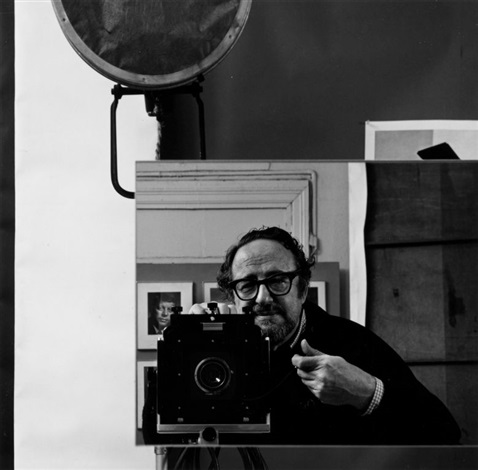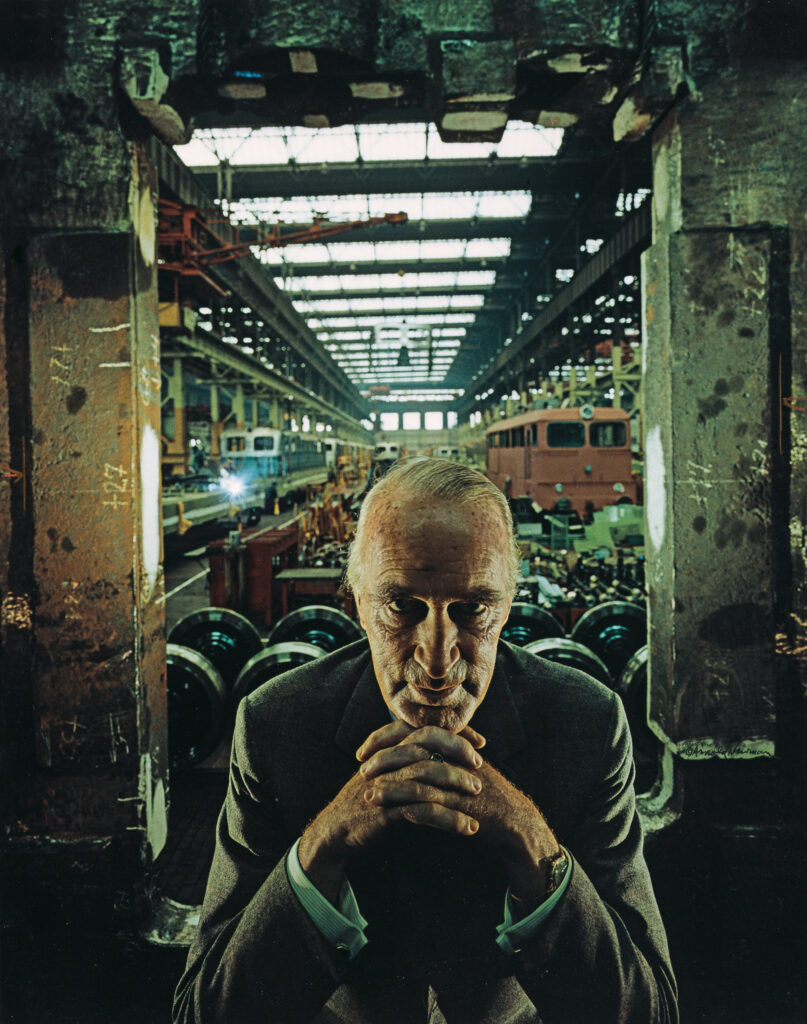
Arnold Newman was one of the most accomplished portrait photographers of the twentieth century known for his environmental portraits of artists and celebrities such as Pablo Picasso, Igor Stravinsky, and Marilyn Monroe.
He was also known for his carefully composed abstract still life images. In 2006, he was inducted into the International Photography Hall of Fame and Museum.
Image Analysis

Visual:
In the image the sitter is the main focal point and he is very central. He’s framed by concrete pillars, giving off a cold, industrial sense, he is also leaning into the photo with clasped hands and strong eye contact to give him a sinister and confident look.
The background looks very industrial and it looks as though the sitter is in ownership or in charge of the environment. The lights on the ceiling are leading lines from the top of the image to the sitter’s portrait. The light on the top of the photo contrasts the dark lighting on the bottom which creates balance. The image has a very strong contrast which exaggerates the sinister atmosphere. The sitter appears elevated above the background which further enhances the ownership.
Technical:
The lighting could be artificial which creates a strong contrast on the sitter’s face making him look more sinister and darkening his gaze. The photography probably used a medium aperture as the image has a sharp foreground and a slightly softer background but we are still able to identify some of the environmental details. The shutter speed could be quite fast as the subject is in focus, with a balanced exposure, the angle of the image is also in eye level with the subject which makes us feel like we are sitting opposite from him which makes us feel more intimidated and it seems more confrontational.
Contextual:
In 1963, Jewish photographer Arnold Newman was commissioned by Newsweek to take a portrait of Alfred Krupp, a convicted Nazi war criminal.
Alfred Krupp was a German industrialist who ran the Krupp empire, a major arms manufacturer during World War II. Convicted as a war criminal for his company’s use of slave labour, the majority of the men and boys who perished were Jewish and Krupp holds a particular place of hatred amongst its people, he was later pardoned. Despite his pardon, Krupp remained a controversial figure, and his reputation as a ruthless businessman and war profiteer followed him.
At first, Newman refused, but eventually, he decided to take the assignment as a form of personal revenge. The resulting portrait became one of the most controversial and significant images of its time.
When preparing to take the photo, Newman asking Krupp to lean forward slightly, when Krupp did this he also clasped his hands together under his chin. When he moved, the light hit his face perfectly and when Newman saw this he stated that ‘he felt the hair stand up on the back of his neck’.
Concept:
The portrait captured the essence of Krupp’s character, making him look like the embodiment of evil. Upon seeing the portrait, Krupp was furious. Nevertheless, the image was published and became one of Newman’s most famous works. The portrait served as a powerful reminder of the atrocities committed during World War II and the individuals who were responsible for them. The circulation of the photo brought Krupp out from the shadows and allowed Newman to share his hatred for his man with the world.
